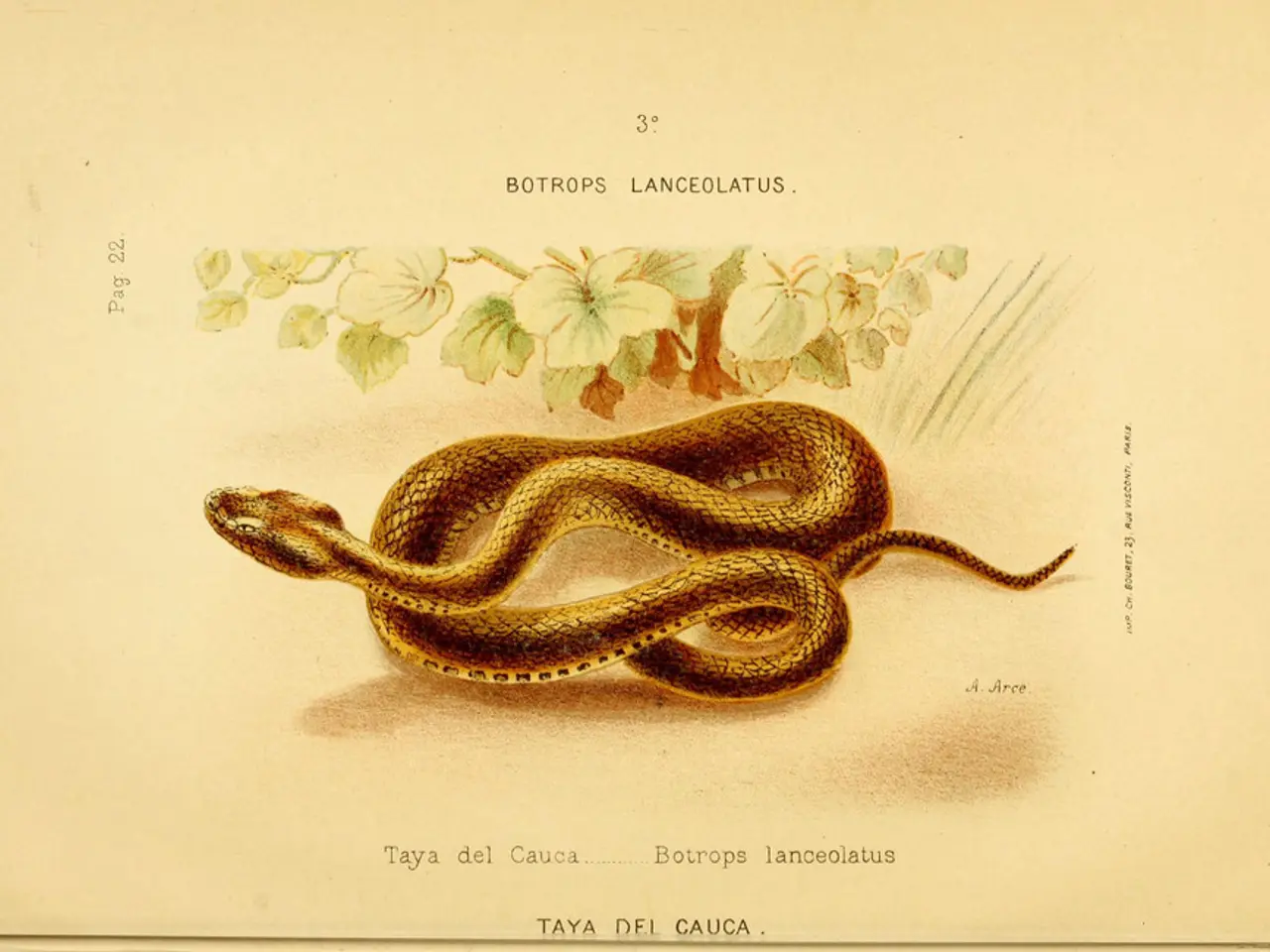Comprehensive Analysis of Animal Toxins and Intoxication
In the vast and diverse world of nature, few creatures are as feared as those that carry potent venom. From the slithering snakes to the scurrying arachnids and the stinging insects, these creatures possess a unique ability to inject toxins that can have devastating effects on their victims.
Let's delve into the world of venomous creatures, starting with spiders. Their venoms are either cytotoxic or neurotoxic, causing either ascending motor paralysis or damage to peripheral nerve ends. Insects such as bees, wasps, hornets, and ants also possess venom capable of causing systemic toxic reactions.
Scorpions, with their segmented bodies and claws on the first segment, are another source of venom. Scorpion venom is a colorless, transparent toxalbumen that might be classed as hemolytic or neurotoxic. If the scorpion sting contains hemolytic venom, the reaction is mostly local and mimics a viper snake bite, however, the scorpion sting will only have one hole in the reddish area. Anaphylactic reactions might happen right away or take up to 20 minutes after a sting.
Centipedes, often overlooked, are also venomous. A bite from these creatures can lead to swelling and necrosis of the skin, paralysis, and contracture of the limbs, heart abnormalities, arthritis, and meningitis.
Among the most venomous snake species are those from the families Colubridae, Atractaspididae, Elapidae, Viperidae, and Hydrophiidae.
The family Colubridae includes many rear-fanged venomous snakes, but they typically have less potent venom compared to others. No prominent species from this family is considered among the very most venomous globally.
Atractaspididae, known for their unique sideways fang strikes and potent venom, includes burrowing asps and stiletto snakes. However, no highly toxic species details were found in the search.
Elapidae, on the other hand, contains some of the most venomous snakes worldwide. The Inland Taipan (Oxyuranus microlepidotus), considered the most venomous snake based on venom toxicity, is native to Australia. Its venom is strongly neurotoxic and capable of killing multiple adult humans with a single bite. It has a relatively low venom yield but extremely high potency.
Coral Snakes (Micrurus spp.), found in Brazil and other regions, are also part of this family. They are known for their highly potent neurotoxins causing paralysis and respiratory failure; bites are rare but dangerous. They are frequently mimicked by non-venomous species.
Viperidae, this family includes snakes with hemotoxic venoms that cause tissue damage and bleeding. The Eastern Diamondback Rattlesnake, among the most venomous in the US, and Russell’s Viper, found in India and South Asia, are responsible for many snakebite deaths.
Lastly, Hydrophiidae, or sea snakes, include highly venomous species such as the beaked sea snake. These creatures possess potent neurotoxins adapted to marine life.
In summary, the Inland Taipan (Elapidae) is regarded as the most venomous by toxicity, Russell’s Viper (Viperidae) and Bothrops lanceheads are medically significant for causing many human fatalities, and coral snakes (Elapidae) are notable for neurotoxicity. The family Colubridae includes fewer highly venomous species compared to these groups.
Each of these creatures, in their own way, demonstrates the incredible power and diversity of nature's venomous arsenal. Understanding them is crucial for ensuring our safety and for advancing our knowledge of these fascinating organisms.





